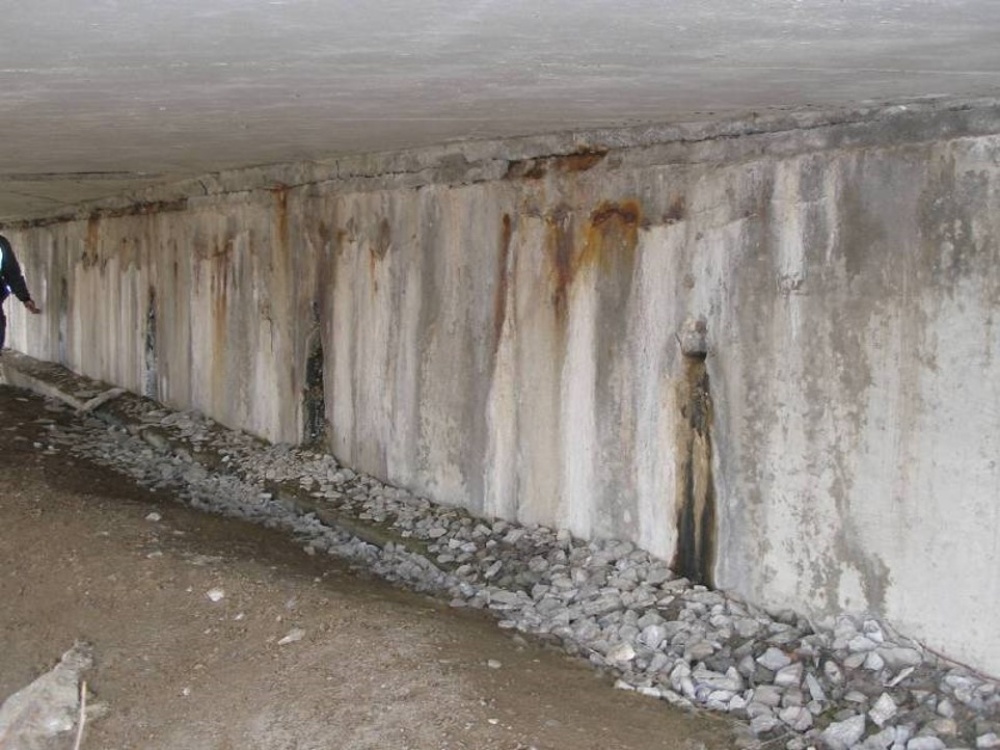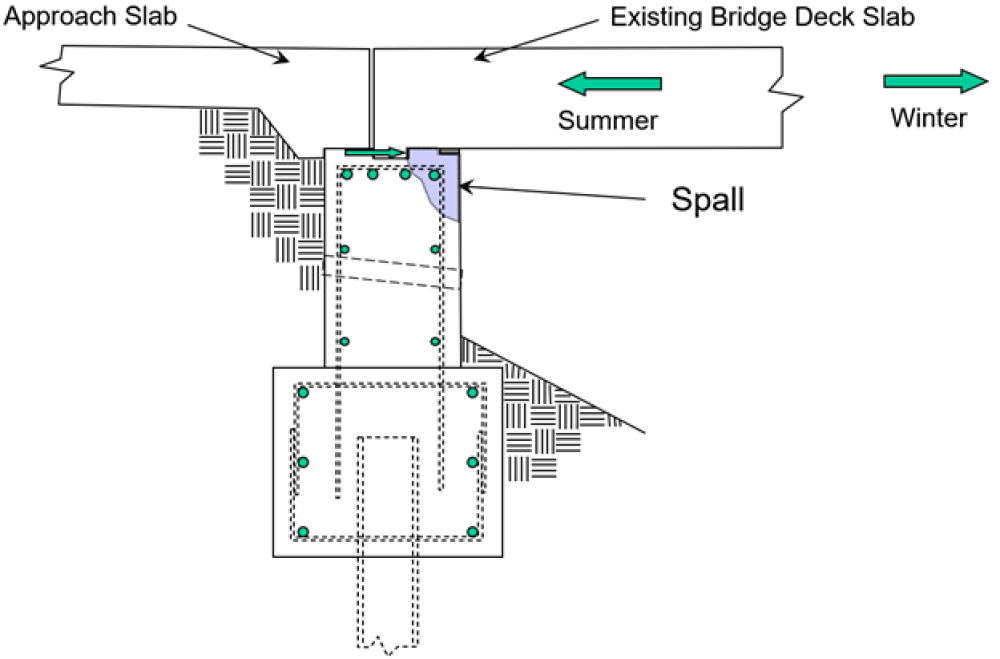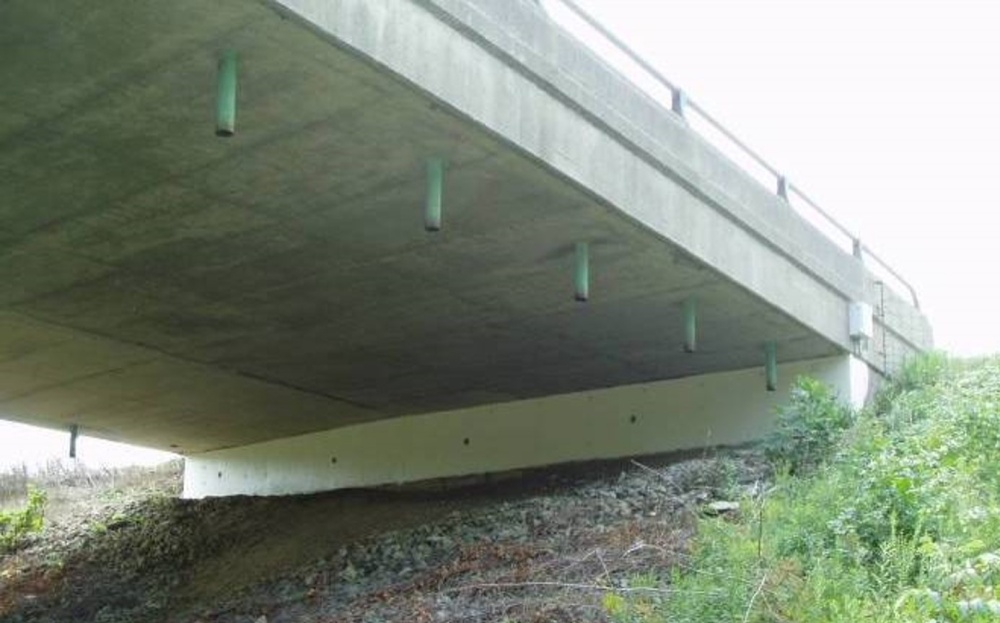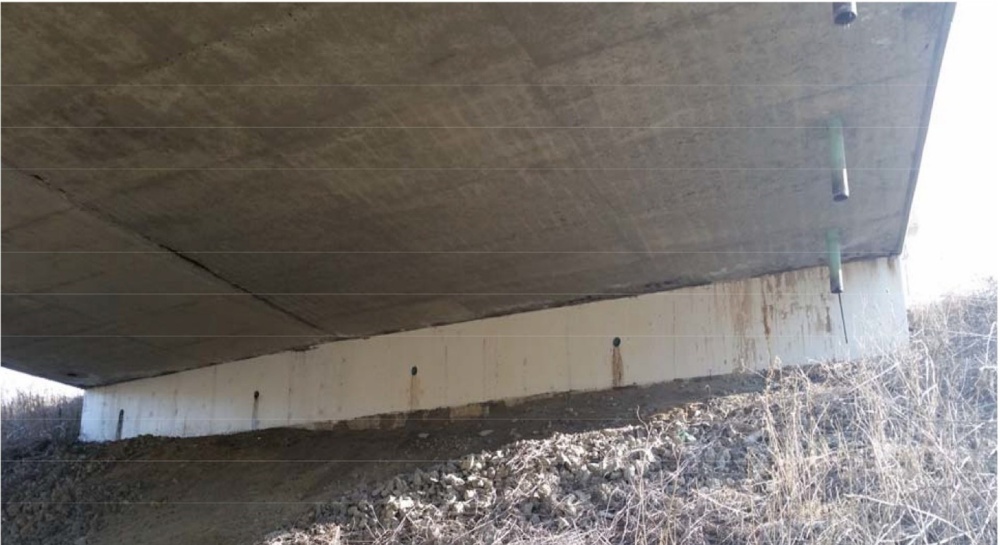I-75 Interstate Bridge

In 2005, the Ohio Department of Transportation District 7 conducted an experiment with the objective of finding a method to get ahead of a seemingly constant substructure repair cycle. This experiment replaced the normal process of performing substructure patch repairs with an abutment refacing strategy containing galvanic cathodic protection. Prior to employing this strategy, the District struggled to keep up with the number of bridges needing repairs because the area adjacent to the last repairs would require repair within 5 to 7 years.
The Problem
With 1408 bridges to maintain, they just couldn’t sustain the increasing rate of maintenance repair projects each year to keep up with the deterioration rate. When they fell behind, the substructure would deteriorate to a point where the abutment would need to be replaced. However, the decks that had a concrete or asphalt-wearing course normally had minimal distress and years of remaining service life.
Many of these older bridges carry Interstate 75 (I-75) through the district. I-75 is a major north-south highway that runs 1,786 miles from the Great Lakes to the Southeast regions of the United States. It begins at the Canadian border at Sault Ste. Marie, Michigan and ends near Miami, Florida. Maintenance of the bridges is key to keeping heavy commercial and noncommercial traffic flowing on this important route.

Corrosion of Reinforcing Steel in Concrete
It has become common for abutments to experience concrete damage and deterioration on these slab bridges. Corrosion was the cause of failing abutments due to the deck joint being directly over the abutment. The joint seals would fail, allowing deicing salt, grit and water to enter the joint and contaminate the abutment stem wall. These typical 1950s vintage slab bridges would have a 19 to 22-inch thick slab cast into a key joint at the top of the abutment. As the deck would cool in the winter, thermal contraction would put tension on the key as it pulled the abutment stem walls toward each other. This likely initiated a crack at the base of the key that accelerated salt contamination of the stem wall reinforcing. Once corrosion started, the top of the stem wall would spall.

Our Solution
The options considered to fix the ailing abutments were:
- Do Nothing - Not a feasible alternative for deficient bridges on the interstate system
- Repair bridge - With appropriate repair, most of these bridges have remaining service life
- Replace bridge - Not cost-effective to remove a good slab, and extremely disruptive to traffic

In 2005, The District Bridge Engineer strategized that if the entire abutment were repaired in such a manner that the repairs could last 20 years, it would allow the District to get ahead of the repair cycle, allowing the District more time to program bridge replacement. The intent of this strategy was to provide additional service life to the abutment to match or exceed the remaining service life of the deck. The solution developed was an abutment refacing strategy using self-consolidating concrete with galvanic cathodic protection to prevent reoccurring corrosion activity, allow thermal joint movement, and reestablish the slab-bearing surface.
The Results
One of the keys to longevity was the use of galvanic anodes in the repairs. The Galvashield DAS is an alkali-activated zinc anode encased in a mortar shell. The anodes were sized to protect the existing reinforcing under the joint for a minimum of 20-years of service life.

Sustainability:
Over the last 18 years, the bridges included in the ODOT refacing experiment have performed remarkably well, eliminating two full 7-year repair cycles so far and appearing to have many more years of service to go. This strategy has proven exceptional progress in the way of sustainability by both reducing the natural resources consumed and reducing the growth of their yearly bridge maintenance costs.

Technology Used
These innovative products and technologies were used on this project.